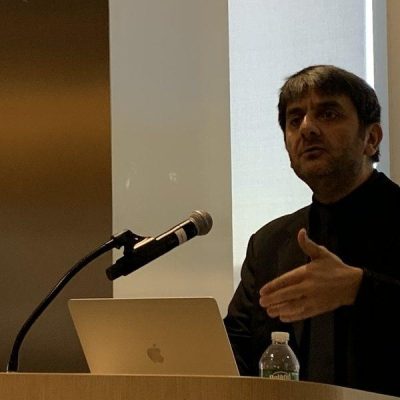Class brings together aesthetics and computation
According to Yoel Fink, clothing will soon do a lot more than keep people warm or indicate whether they’re going to work or a cocktail party. That’s because the fabric that clothing is made of will be a computer.
“Fabrics are going to do for us everything that our smartphones are doing and a lot more,” said Fink, professor of material science and joint professor of electrical engineering and computer science. He teaches 3.173 (Computing Fabrics). The course looks back on the history and industrialization of fabrics and ahead to future products.
Because the fabric in clothing covers the surface of the body, computerized fabric can, for example, give people warning signs about changes in their health, such as a respiratory decline or a change in heartbeat.
“What we’re doing is converting the fabric from just being what it has always been to something that plays a very meaningful role in our lives.”
The class, the subject of a June video produced by MIT, prepares students to incorporate aesthetics and computation, Fink explained.
Maryam Aljomairi, a graduate student in the School of Architecture and Planning, said it’s in the “in-between spaces” where powerful ideas are born.
“Textiles are something that we interact with every day in terms of interiors or furniture or even clothing,” said Aljomairi, who studies design and computation. “I think there’s a lot of potential in utilizing textiles across scales, and how can we start to make these textiles smarter and responsive at a fiber level?”
The class begins by examining the properties of different materials. Batteries can be made in the shape of a fiber that can be woven into fabric, and elastomer materials can be added to make it stretch, said Juliette Alain, a graduate student in Fink’s research group.
“But once you add other materials into it, materials that are typically too rigid, like a metal electrode—metal doesn’t stretch,” said Alain. “So we developed a process that allows you to, after you draw your fiber, make your electrode wavy, give it buckled shape so that you can then pull on your fiber and the fiber will be stretchable.”
Computerized fabrics will shape a very different future, but some things won’t change, Fink said.
“Yes, fabrics are still going to be the closest things to our heart. They’re still going to be as soft and as beautiful as they have always been. But now they’re going to take on a whole new meaning. They’re going to be providing value to us that has never before been seen.

